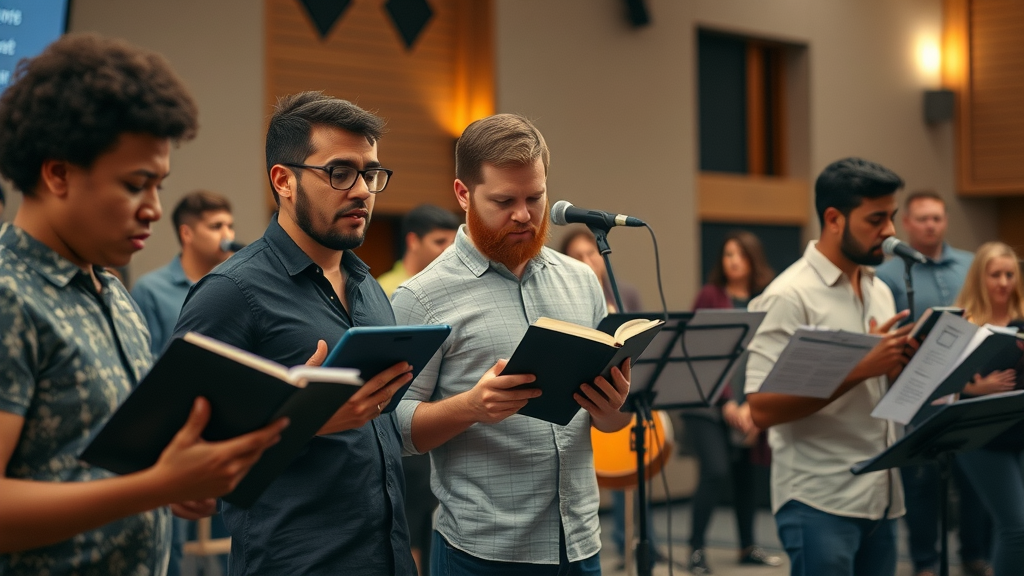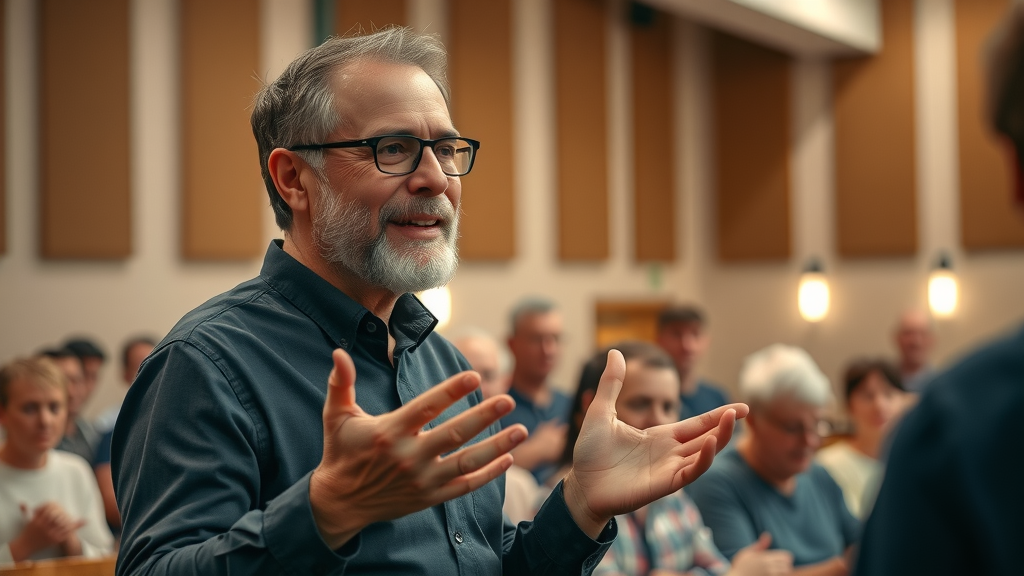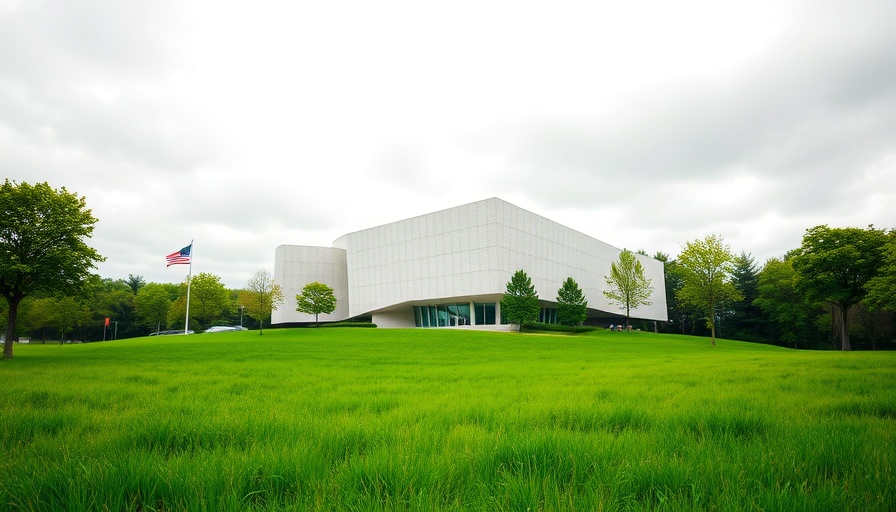Did you know that a small group of worship song writers now dominates the global music scene? Understanding this trend reveals how influence shapes modern worship and why diversifying voices can enrich spiritual experiences for countless congregations worldwide.
Opening Insights: The Shift in Worship Song Writers' Trends

Did you know that a small group of worship song writers now dominates the global music scene? Understanding this trend reveals how influence shapes modern worship and why diversifying voices can enrich spiritual experiences for countless congregations worldwide.
The worship song writers trends story has truly shifted over the last decade. In the 2010s, the Christian music world was clearly defined by what many called the "Big 4": Hillsong, Bethel, Elevation, and Passion. While each maintained its own creative silo, today, the lines have blurred. Now, top worship leaders and songwriters from these movements collaborate far more closely—sometimes blurring the sense of which church or ministry a song truly belongs to.
This editorial takes a closer look at this power consolidation, asking tough questions: Who really decides what the world sings in church on Sunday? How does this impact your local church, your worship team, and your spiritual journey? And perhaps most importantly, what do we lose when only a few voices shape our worship music? Join us as we uncover behind-the-scenes trends, learn from chart-topping songs (from CCLI Top to Matt Redman), and discover what can be done to celebrate both excellence and diversity in worship music.
What You'll Learn About Worship Song Writers Trends
How worship song writers trends have shaped the worship music industry
The impact of consolidating power among top worship leaders and christian music professionals
Ways this trend affects the local church and spiritual diversity in worship music
Which worship songs dominate today's church charts (CCLI top, Matt Redman, and more)
A Brief History: From Institutional Silos to Personal Networks in Worship Song Writing Trends

The Era of the Big 4: Hillsong, Bethel, Elevation, and Passion
In the early 2000s and 2010s, the worship music landscape was carved up by powerful collectives, often called the "Big 4": Hillsong, Bethel Music, Elevation Worship, and Passion. Each group created a distinct sound, led by a handful of highly influential worship song writers and worship leaders. Their songs, such as Hillsong’s “What A Beautiful Name,” Bethel’s “Raise a Hallelujah,” Elevation’s “O Come to the Altar,” and Passion’s “Even So Come,” became church anthems across continents.
Interestingly, despite some collaborations, these institutions mainly operated within their own networks. The inclusion of guest or outside writers was limited and often depended on internal strategy, not open invitations. This era was marked by strong brand identities and often, a competitive edge for chart-topping worship songs on platforms like the CCLI Top list. Notable worship leaders, such as Chris Tomlin, Matt Redman, Brandon Lake, and Phil Wickham, cultivated strong followings within their respective camps and rarely strayed outside their institutional boundaries.
CCLI Top Songs: Tracking the Most Influential Worship Music
The CCLI Top charts have long served as a barometer for what songs churches sing worldwide. For years, the same songwriters’ names surfaced again and again: Matt Redman, Chris Tomlin, Phil Wickham, and more recently, Brandon Lake and figures associated with Maverick City Music. The dominance of these few gave incredible reach to their work but left little space for new voices to break in.
By emphasizing sure-hit songs repeated at countless services, the worship music industry became both highly efficient and incredibly homogeneous. Congregations everywhere began singing the same handful of christian songs and worship music, building a shared but sometimes narrow experience across the globe. But has this model reached its breaking point, and if so, what is emerging in the current decade?
Comparison of Top Worship Song Writers, Their Affiliations, and Notable Songs
Song Writer |
Affiliation |
Notable Worship Songs |
|---|---|---|
Matt Redman |
Passion, Capitol CMG |
10,000 Reasons, Blessed Be Your Name, Heart of Worship |
Chris Tomlin |
Passion, Capitol CMG |
How Great Is Our God, Good Good Father, Our God |
Brandon Lake |
Bethel Music, Maverick City Music |
Gratitude, Too Good To Not Believe, Graves Into Gardens |
Phil Wickham |
Capitol CMG |
Living Hope, This Is Amazing Grace, Hymn of Heaven |
Brooke Ligertwood |
Hillsong Worship |
What a Beautiful Name, King of Kings |
Worship Song Writers Trends in the 2020s: From Institutional Power to Personal Influence

Family of Songwriters: How Worship Leaders Now Collaborate Across Boundaries
Today, social media and streaming platforms enable worship leaders and christian artists from once-separate ministries to join forces like never before. Spotify and Instagram Reels make it easy for worship music to go viral—regardless of which church music label produced it. The "family" mentality is now less about institutional loyalty and more about friendships, shared beliefs, and collaborations stretching from Nashville to Sydney.
Worship song writers increasingly co-write across labels, organizations, and denominations. For example, a song might feature contributions from Matt Redman, Phil Wickham, and Brandon Lake, even though they are associated with different movements. The lines between Bethel Music, Elevation Worship, Maverick City Music, and Hillsong blur, with top worship leaders contributing to projects and tours outside their home churches. This web of relationships means the worship song writers trends have shifted toward a few individuals influencing the sound of worship music worldwide.
This dynamic of collaboration and influence is not unique to worship music; it echoes broader patterns in Christian artistry, where individual journeys and messages can shape entire communities. For a closer look at how a single artist’s faith and creative process can impact listeners, explore the story behind Josh Pantana's 'Glory' and its journey through faith and doubt.
Case Study: Matt Redman and the Rise of Key Christian Music Songwriters
No discussion of worship song writers trends is complete without spotlighting Matt Redman, whose career exemplifies both the benefits and challenges of power concentration. Redman's classics—such as “Heart of Worship” and “10,000 Reasons”—are sung in thousands of local church worship services each week. Yet, his influence also illustrates how the same circle of writers often appears at the top of worship charts year after year.
Partnering with producers from Capitol CMG, collaborating with global voices like Chris Tomlin, Phil Wickham, and spearheading new projects, Redman’s reach stretches far beyond one local church or city. While this cross-pollination has elevated production standards and ensured musical excellence, it can also limit opportunities for lesser-known songwriters to break into the big leagues of the worship music industry.
"While the "Big 4" once organized worship by institution, today’s market is defined more by individual voices and relationships than denominational lines."
Implications of Worship Song Writers Trends for the Local Church
How Worship Leaders Choose Songs Today

Worship leaders and worship teams face more choices now than ever—yet many gravitate toward the same shorter list of CCLI Top worship songs. Digital tools, such as Planning Center and Spotify playlists, aggregate the most loved worship music. Recommendations from popular Instagram reels and music blogs further encourage repetition of the same anthems. While this makes planning easier and ensures congregation familiarity, it can stifle creative risk-taking and sideline up-and-coming songs written within local church communities.
Past years have also seen the normalization of high production values. Capitol CMG and broadcast-driven city music collectives have raised the bar, making original music from smaller church teams seem less polished by comparison. But with every click and stream, worship leaders reinforce the dominance of established writers, sometimes at the expense of their church’s unique voice and story.
Effects on Congregational Diversity in Worship Music
As worship song writers trends move toward consolidation, local church music tends to mirror global charts more closely. This has real impacts on worship diversity: Theological themes in Christian music become less varied, creative experimentation takes a back seat to “what works,” and the same handful of popular songs or writing styles show up in church after church.
The result? Congregational identity can become muted, with few opportunities for church-specific stories, languages, and traditions to emerge through worship. On the positive side, high-quality worship songs reach more people than ever. However, when worship leaders lean only on songs by Matt Redman, Chris Tomlin, or Phil Wickham, congregants may begin to feel a lack of connection with the songs’ themes, as these do not always reflect the diversity and lived experiences of every local church community.
Increased repetition of certain christian music themes
Potential narrowing of theological perspectives
Enhanced production standards but potential loss of local church distinctiveness
Are We Missing Out on Local Church Voices? Exploring the Downsides of Trends Among Current Worship Song Writers

Exposure and Opportunity for Emerging Worship Leaders
For every Matt Redman or Brandon Lake, there are countless talented worship leaders and songwriters crafting original christian songs in their local churches. Yet, with industry gatekeeping and the gravitational pull of CCLI top songs, few have the chance to see their music reach a global audience. Social media has opened some doors, but the reality is that the big platforms amplify familiar names, not fresh voices. This can be discouraging to independent songwriters and undermines the unique local contributions to worship music.
Because worship leaders searching for new songs see the same recommendations from streaming and chart data, it’s harder for them to discover or champion their own team’s music. In this environment, even highly creative or culturally specific worship music from one local church struggles to find traction outside its immediate community - leading to a cycle of further centralization in worship song writers trends.
The Balance Between Excellence and Authenticity in Worship Music
Excellence is a worthy aim - after all, music that moves and inspires tends to be well-crafted and skillfully delivered. But is that all there is to the heart of worship? Authenticity, local context, and fresh revelatory moments of devotion often spring from grassroots, imperfect beginnings. With the same circle of writers shaping most popular worship songs, are we crowding out the experimental, the culturally unique, or the raw stories that could resonate deeply with local church communities?
"When the same circle of worship song writers shapes what the world sings, do we crowd out the creativity found in the local church?"
People Also Ask: Worship Song Writers Trends FAQs

What is the most popular worship song right now?
Exploring the Current CCLI Top Charts and Dominant Worship Song
The most popular worship song at the time of writing is “Gratitude” by Brandon Lake, frequently topping the current CCLI Top charts across the U.S. and globally. It’s worth noting that songs like “10,000 Reasons” by Matt Redman and “Living Hope” by Phil Wickham remain worship staples as well. Songs navigate to the top charts not just through church usage but also through viral exposure on platforms like Spotify and Instagram reels, illustrating just how strongly current worship song writers trends echo in both traditional and digital spaces.
What are the 4 types of worship songs?
Understanding the Categories: Praise, Adoration, Confession, Thanksgiving in Worship Music
Worship songs are often grouped into four categories: Praise (songs celebrating God’s greatness), Adoration (songs focused on intimacy and love toward God), Confession (songs expressing repentance and seeking forgiveness), and Thanksgiving (songs offering gratitude for God’s goodness). This framework helps worship leaders balance their setlists, though contemporary worship often trends towards praise and adoration—another example of how worship song writers trends affect what gets written and sung.
What is the most trending gospel song?
Spotlight: Latest Gospel Song Taking Over Worship Leaders’ Playlists
Outside the typical contemporary worship ecosystem, “Goodness of God” by Jenn Johnson (Bethel Music) and “God Problems” by Forrest Frank both enjoy surges in popularity among worship leaders and gospel audiences alike. Maverick City Music’s collaborations and social media presence have broadened the soundscape of Christian music, ensuring fresh gospel songs remain featured on playlists and in worship teams’ repertoires worldwide.
How to write a really good worship song?
Best Practices from Worship Song Writers Trends and Industry Experts
Start by focusing on clear, theologically grounded lyrics and a simple, singable melody. Many experts, including well-known worship song writers like Matt Redman and Chris Tomlin, suggest writing from personal experience and for your own local church first. Pay close attention to what resonates with your congregation and be open to feedback from your worship team. Finally, take advantage of social media and digital platforms to share your creations, while remembering that authenticity and heart count just as much as production quality in today’s worship music landscape.
Worship Song Writers' Trends: Key Takeaways
Consolidation among worship song writers trends is real and growing
Influence now moves through personal networks, not just institutions
Local church creativity may be threatened by this centralization
Worship leaders and congregations have the power to champion diverse voices
FAQs: Worship Song Writers Trends

How has the worship song writers' landscape changed in the last decade?
In the last ten years, we’ve seen a shift from church-based brands (like Hillsong or Bethel) to individuals (like Brandon Lake, Phil Wickham, Matt Redman) writing songs used by churches everywhere. Collaborations are more common, creating a family network rather than isolated silos.What impact do leading worship music songwriters have on what churches sing?
Leading songwriters set trends by dominating streaming, social media promotion, and CCLI Top charts. Their songs become the standard for worship teams everywhere, influencing spiritual and musical direction even down to small local church services.Are there advantages to the current worship song writers trends?
Yes - higher production values, powerful new co-writes, and a sense of worship unity globally. However, there's also a risk of the same perspectives being repeated while important local context and creativity are left behind.What can local church worship leaders do to contribute original worship songs?
Worship leaders can encourage songwriting within their teams, share music online, connect with other local churches for feedback, and advocate for their community’s unique story being reflected in their worship music choices.
Conclusion: Where Do We Go From Here With Worship Song Writing Trends?

Championing Diversity and Creativity in Worship Song Writing
"The future of worship music depends on every voice being valued—from global hitmakers to local church worship leaders."
Moving forward, the challenge lies in balancing excellence with authenticity. Worship leaders hold the keys to diversifying the worship music canon by celebrating local voices and supporting original songs. By intentionally broadening their circle—and encouraging their congregations to do the same—the global church can ensure the songs of tomorrow are as diverse and dynamic as God intended.
If you’re inspired to think more deeply about the intersection of faith, creativity, and community, consider how shifts in worship music reflect broader changes in Christian culture. For example, the evolution of family-oriented spaces and values within faith communities is another area where tradition and innovation meet. Discover how these cultural shifts are shaping the future of church life and engagement by exploring the future of family-oriented spaces and community values. By connecting these insights, you’ll be better equipped to foster both musical and cultural vibrancy in your own faith journey.
Have You Observed Trends in Worship Song Writers?
Your experience in a Worship Team? We'd love to read your comments...
Have you seen worship song writers shape your setlists, or felt inspired to write your own music for your local church? Share your story below and help inspire the next generation of worship leaders!
Sources
Recent analyses reveal a significant consolidation of influence among a select group of worship songwriters, leading to a more homogeneous worship music landscape. According to Worship Leader Research, from 2020 to 2025, 47 out of 51 new songs entering the CCLI Top 100 were penned by a small, interconnected group of songwriters associated with major megachurches and collectives. (relevantmagazine.com) This trend underscores the shift from institutional silos to personal networks, where individual songwriters like Brandon Lake, credited on 13 of these songs, play pivotal roles in shaping global worship music.
The rise of collaborative songwriting has further concentrated creative control. In 2024, 82% of songs on the CCLI Top 100 involved multiple writers, a stark increase from 19% in 1988. (the-scroll.com) This collaboration often occurs within the “Big Four” megachurches—Elevation, Bethel, Hillsong, and Passion—resulting in a limited circle of influence.
Additionally, the representation of female songwriters has declined. In 1988, 30% of songs in the CCLI Top 25 were written by solo women; by 2018, this number had dropped to 4%. (christianitytoday.com) This underrepresentation suggests that the consolidation of songwriting power may also be contributing to a lack of diversity in worship music.
These developments raise important questions about the diversity and inclusivity of voices in worship music, highlighting the need for broader representation to enrich the spiritual experiences of congregations worldwide.
 Add Row
Add Row  Add
Add 








Write A Comment